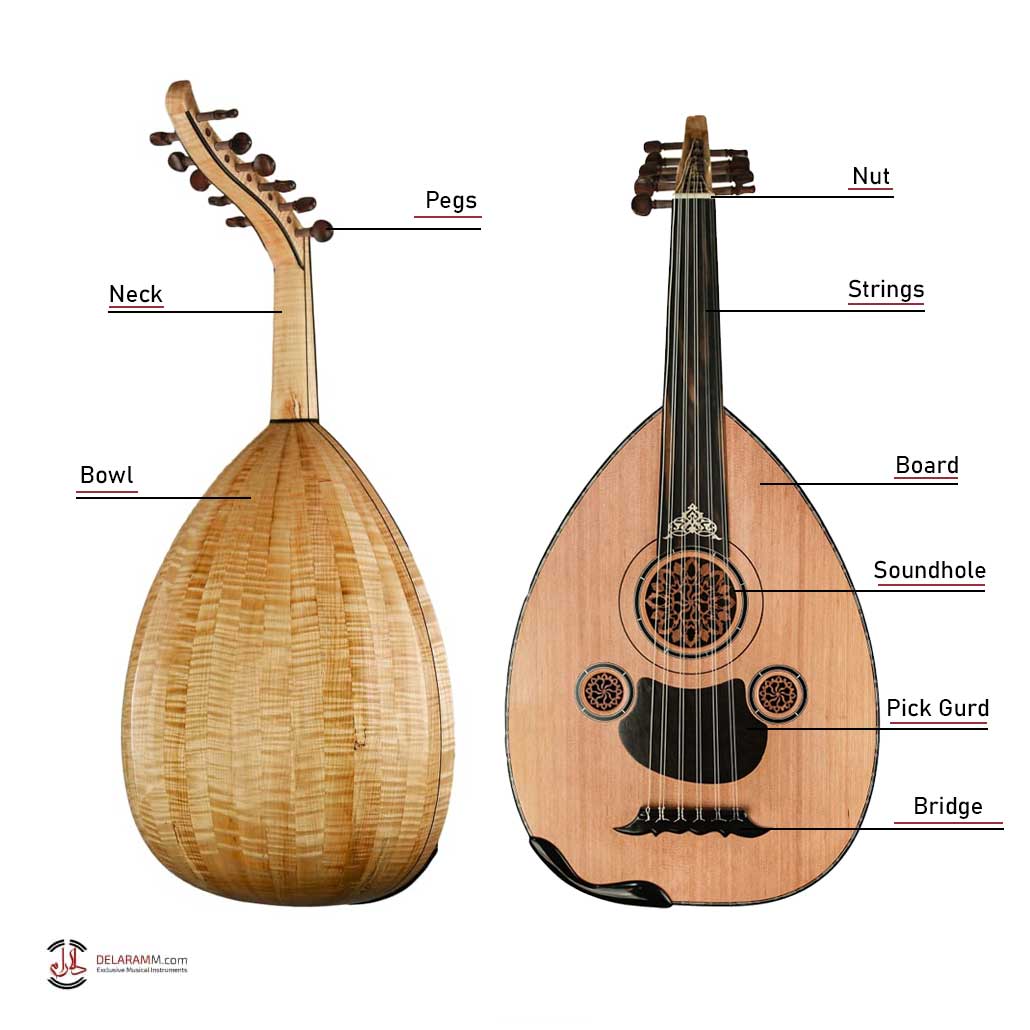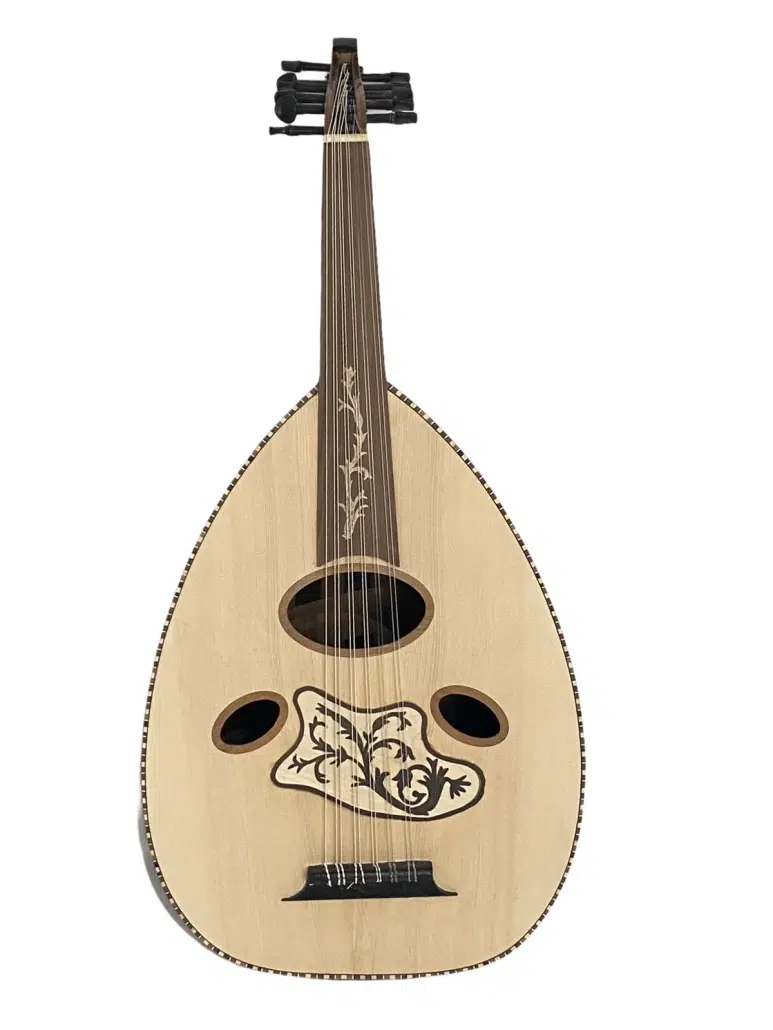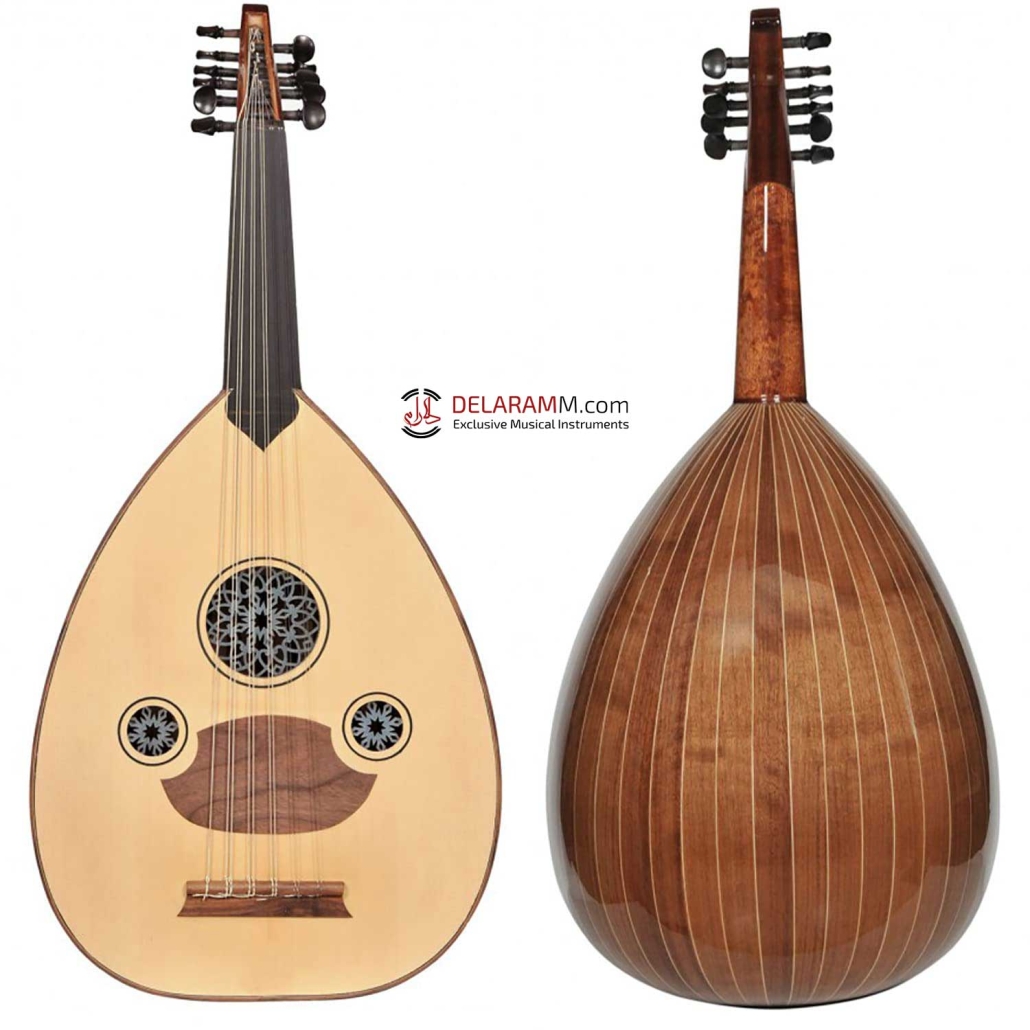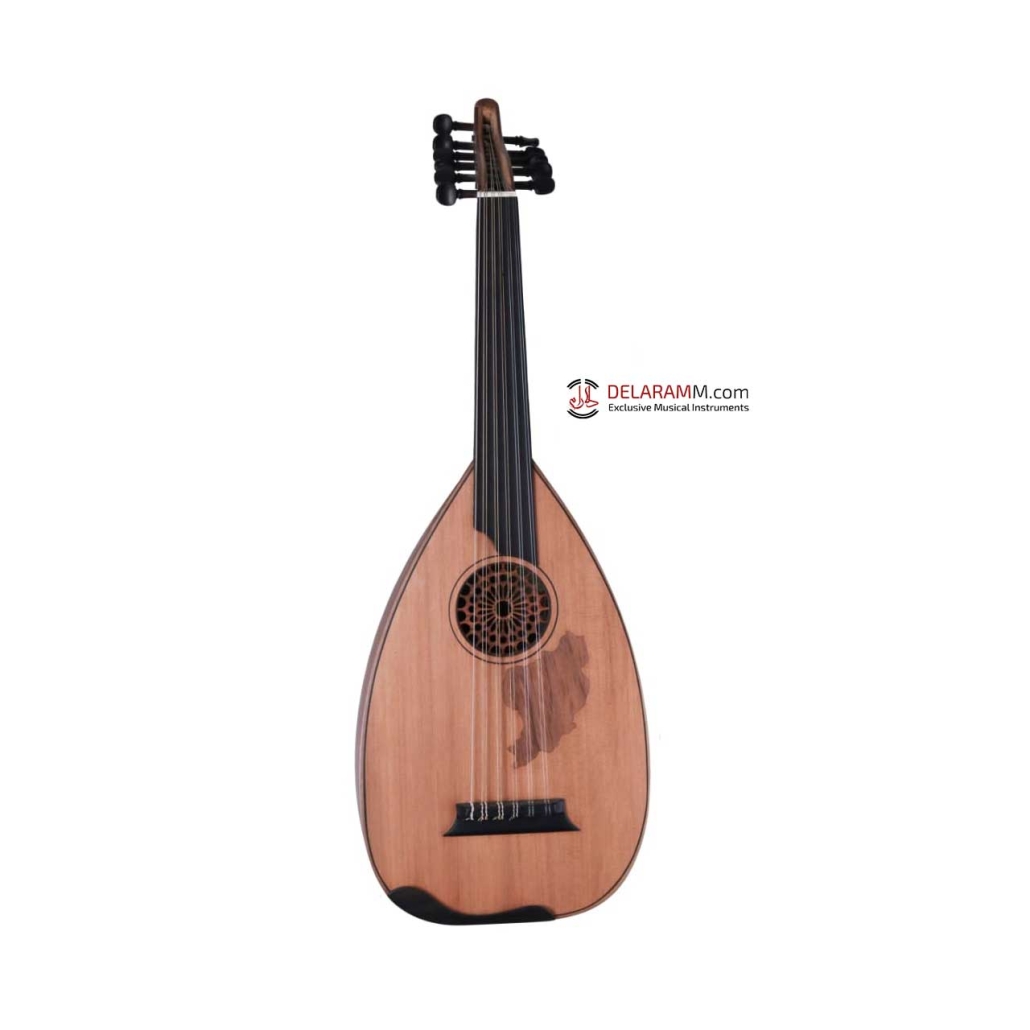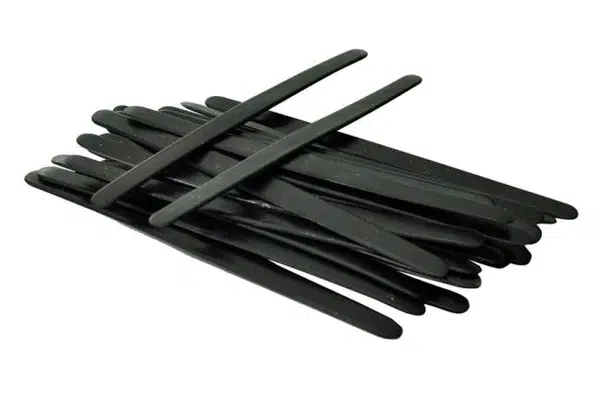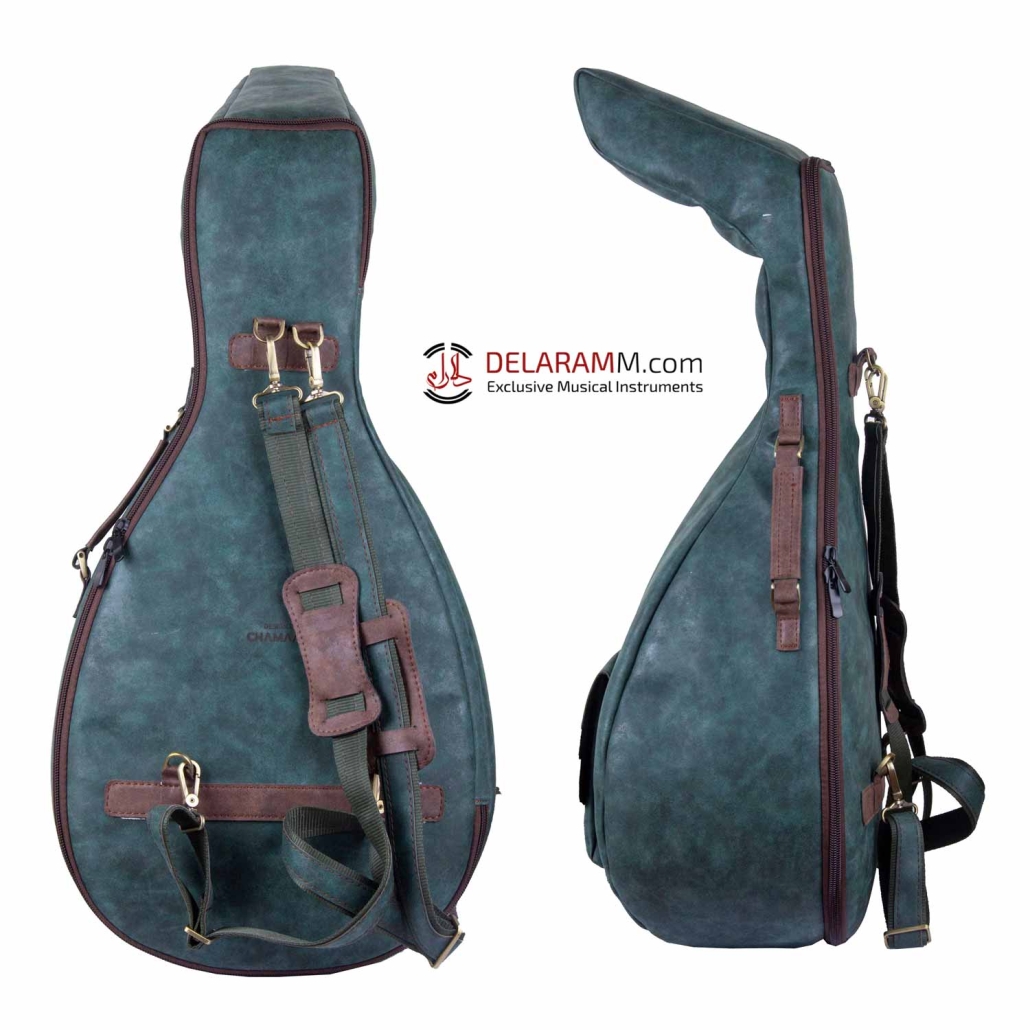A Guide to Buying the Perfect Oud Instrument for Beginners
Introduction to the Oud Instrument
The oud instrument, a pear-shaped stringed instrument, holds a significant place in the world of music. Predominantly used in Middle Eastern music, this beautiful instrument can touch hearts with its alluring and unique melodies. If you are aiming to venture into learning this wonderful instrument, this guide is here to help you make the best choice for your first Oud.

What is an Oud?
An oud is a string instrument similar to a lute or a mandolin, believed to have been created around the 8th or 9th century. It usually has 11 or 13 strings that are grouped into courses, which are usually played with a plectrum. The Oud’s unique sound comes from its pear-shaped body, flat front, and lack of frets, which allow for a greater range of sounds. It’s a versatile instrument, suitable for both solo performances and accompaniments.
History and Origins of the Oud
The Oud has a rich and ancient cultural history, believed to have roots dating back as far as 3500 years ago to the area now known as Iran or Persia. The instrument was renowned and celebrated in the golden age of Arab civilization between the 8th and 13th centuries. Since then, the Oud has journeyed across continents, evolving and adapting to different musical styles but always maintaining its beautiful, unique sound. Today, it continues to be a vital part of Middle Eastern and African music. It has also gained acclaim in the Western world.
Benefits of Learning to Play the Oud
Learning to play the Oud opens up a world of cultural richness and musical versatility distinct to this unique instrument. There’s something deeply satisfying and rewarding about the mesmerizing tunes produced by an oud, making it an excellent choice for any beginner desirous to venture into the enchanting realm of music.
Cultural Significance
The Oud holds a significant place in the history of music, particularly in Middle Eastern, Eastern European, and North African cultures. To play it is to keep an ancient tradition alive, one that dates back centuries. Learning this instrument is not just about the music; it’s also a way to understand and appreciate different cultures. The Oud’s melodic expressions are a testament to the emotions, traditions, and stories of people from many different lands.
Musical Versatility
The Oud isn’t limited to the sounds of the past; it boasts extraordinary musical versatility. With its rich and resonant tones, an oud can be used to play a wide range of music genres. It’s not uncommon to hear the Oud in contemporary music, jazz, fusion, or even popular Western music. Whether you want to play traditional Arabic tunes or experiment with modern music styles, the Oud offers a unique tonal range that will captivate your audience.
– It can be used to perform soulful solos or accompany other instruments
– With its deep and dynamic range, it provides a depth to music that’s mesmerizing
– It helps create unique and experimental sounds in modern music styles.
In conclusion, learning to play an oud is not just about the music. It’s about gaining a deep appreciation for an instrument that holds significant cultural ties and boasts an incredible legacy of musical versatility.
Where to Buy an Oud Instrument
When beginning your journey towards mastering the Oud, the first step is acquiring the instrument itself. But where exactly should you go to buy an oud instrument? You have several options, each with its own set of pros and cons.
Local Music Stores
Local music stores can be a good starting point as they often carry a variety of instruments, including ouds. Perks of local stores include:
– The opportunity to physically see and try out the instrument before buying it, ensuring you’re comfortable with the size, weight, and feel.
– You can easily return or have it repaired if something goes wrong.
– You can get expert advice from store personnel who are usually knowledgeable musicians.
However, the instrument variety might not be vast, the prices can be slightly higher, and you might struggle to find a local store carrying ouds if you live in an area where they’re not commonly played.
Online Marketplaces
Global online marketplaces like Amazon or eBay are another option. They provide a wider range of ouds to choose from, varying in price, size, and material. Plus, reviews from previous buyers can help guide your decision. The downside, though, is the inability to test the instrument before purchasing. Also, quality may vary significantly, and shipping can take some time.
Factors to Consider When Buying an Oud Instrument
When taking your first steps into the beautiful world of the oud instrument, there are several factors you should take into consideration. Your first Oud is an important purchase – it’s the key that will unlock countless hours of rich music-making and deep cultural exploration. Let’s look at some of the most important factors to consider when buying your beginner oud.
Budget
The first thing to consider is your budget. Oud instruments come in a range of prices, depending on various factors such as the materials used, the craftsmanship, and the place of manufacture. Beginner ouds are generally more affordable, ranging from $200 to $500, while professional ouds can go up to a few thousand dollars. It’s important to set a budget that you’re comfortable with and stick to it.
- Don’t go for the cheapest; reliability and quality are important
- Consider your dedication level. It might be a good idea to invest a little more if you’re serious about learning.
Materials and Construction
When it comes to material and construction, quality is key. High-quality ouds are typically made of solid wood rather than laminated wood because they resonate better. The type of wood can also affect the sound.
- Spruce, cedar, and mahogany are popular choices for the Oud’s top.
- Rosewood or walnut is often used for the back and sides.
Sound Quality
Sound quality is a subjective factor, but it’s crucial when choosing your Oud. You should listen to various ouds being played (either in person or via recordings) to get a sense of the sound differences.
- Some ouds have a warmer tone, others a brighter one – choose according to your preference.
Playability
Finally, consider the Oud’s playability. As a beginner, you’ll want an instrument that’s easy to play and doesn’t make your fingers sore.
- Check out the action, which is the distance between the strings and the fingerboard. A lower action is generally easier to play.
- Ensure the neck is comfortably shaped and the fretboard isn’t too wide for your hand.
Remember, buying an oud is a personal journey. Take your time and choose the one that not only sits comfortably within your budget but also feels right in your hands and charms your ears with its sound. Happy hunting!
Different Types of Oud Instruments
It’s important first to understand the different types of ouds available. There are primarily three types of oud instruments: Arabic, Turkish, and Persian. Understanding the specifications of each type will help you make the right choice.
Arabic Oud
First up is the Arabic Oud, also known as the classic Oud. It’s famed for its robust, rich, and deep sound that resonates beautifully. The Arabic Oud generally has a larger body, deeper bowl, and rounder back than other oud types. A tuning of C, E, A, D, G, and C, from the low pitch string to the high, is often standard for Arabic ouds. Some distinctive features of the Arabic Oud include:
– Large, pear-shaped body
– No frets
– Uses 11 or 12 strings
– Great for low-pitched music
Turkish Oud
Next on the list is the Turkish Oud. This variant is generally smaller than the Arabic Oud and is distinguished by its higher-pitched and more ringing tone. The Turkish Oud has a sharper body bend and comes with 11 strings tuned to C, F, B, E, A, D. What you’ll love about the Turkish Oud is its:
– Compact and lightly built structure
– Decidedly bright, sharper, and higher-pitched tone
– Identical string setup like the Arabic Oud
Persian Oud
Lastly, there’s the Persian or Iranian Oud, which is also known as Barbat. This variant has a slightly different design with a narrower body and fewer strings (usually incorporating only 10). The Persian Oud is known for its soft and mellow sound. Some characteristics of the Persian Oud are:
– Narrow body style
– Fewer strings compared to other ouds
– Generally produces a mellow, sophisticated tone
Differences in Sound and Design
Although these ouds appear similar at a glance, each type has subtle differences in design, which contribute to their unique sounds. The Arabic Oud’s larger size offers a deeper, fruity tone. At the same time, the smaller Turkish Oud delivers a higher-pitched and more defined sound. The Persian Oud, on the other hand, leans towards a soft yet sophisticated tone. As a padawan of the ouds, it’s crucial to determine which sound and design align with your music goals. Happy oud hunting!
Tips for Buying an Oud Online
If you’re a beginner who’s ready to dive into the world of Middle Eastern music, purchasing your first oud instrument is an exciting (and equally daunting) prospect. But don’t worry; we’ll guide you through the specifics. Here are a few pointers to help determine what to consider when buying an oud online.
Research and Read Reviews
Investing time in research is crucial. Start by reading reviews on different oud brands and models. This will give you a clearer picture of the instrument’s quality and longevity. Reviews also offer insights into different perspectives and experiences. You can use these to gauge how suitable a particular model might be for you.
- Understand the craftsmanship involved in making the Oud.
- Read about the sound quality of different models.
- Discover if the instrument is beginner-friendly.
Check Return and Exchange Policies
Before buying your Oud, always investigate the vendor’s return, refund, and exchange policies. Choosing an oud instrument, especially for beginners, can be challenging, and it’s possible to make a wrong pick occasionally. Hence, if a company has a flexible return policy, buying from them might be a safer bet for your first OUD instrument purchase.
Look for Detailed Descriptions and Photos
Seek out extensive descriptions and high-quality photos of the Oud you’re looking to buy. The more information available, the better it is to help you make an informed decision.
- Detailed specifications such as dimensions, weight, and materials used are significant factors.
- High-quality pictures from different angles will enable you to visualize the real product.
Consider Buying from Trusted Sellers
As a newcomer, it’s best to associate with trusted sellers who possess a sound reputation in the market. They often have knowledgeable customer service teams that can provide advice and answer any questions you have during your buying journey. Always remember that a cheaper price tag doesn’t necessarily mean a better deal. Quality should still be your top-most priority while beginning your musical journey with an oud.
In closing, remember to take your time with the selection process. The perfect oud instrument for you is out there. With these tips in your toolbox, you’ll be strumming away in no time. Happy shopping!
Trying Out Oud Instruments Before Purchase
Planning on buying an oud instrument can be fun and exciting, especially if it’s your first time. But before you make your final decision, it’s worthwhile to familiarize yourself with the different options available. Here are some ways to get hands-on experience with an oud before making a purchase:
Visiting Local Music Stores
Despite the ubiquity of online shopping, nothing beats the experience of visiting a music store. This can allow you to see, touch, and even play different models of ouds. You’ll be able to notice the fine details—how the instrument is built, the weight, the feel against your body as you play it, and most importantly, its sound. Some tips when you visit:
– Ask the sales staff about the origin of the ouds, as this often affects the sound and quality.
– Take note of the different shapes and sizes available.
– Observe how the strings are set up and their standard tuning.
Attending Oud Workshops or Events
Look out for any oud workshops or musical events happening in your area. They offer a great opportunity to immerse yourself in the unique culture that surrounds this instrument. Such events often showcase a variety of oud instruments and provide a chance to meet seasoned players.
Consulting with Experienced Oud Players
Connect with experienced oud players. Their knowledge and expertise in the field can guide you in choosing the right oud instrument for your needs. If you don’t know any personally, look in the local community or online groups dedicated to the Oud. Don’t be afraid to ask questions about their recommendations and experience with certain brands or old models.
Remember, buying an oud is an exciting journey, so take your time to explore and find the perfect one that suits your needs and musical style.
Oud Accessories and Additional Equipment
When investing in an oud, it’s not just about buying the instrument itself. You’ll also need a few accessories and might consider additional equipment to improve your playing experience. Let’s examine these essential add-ons – oud picks, cases, and strings, and also take a peek at amplification options.
Oud Picks
An oud pick, or risha, is not your typical guitar pick. Shaped like a feather, it is often made of cow horn, eagle quill, or plastic. These picks can significantly influence the sound you produce. You should consider having a variety on hand to experiment with different sound effects. Here are a few things to look out for:
– An authentic touch: When you’re buying a pick, ensure it’s designed specifically for the Oud. Picks made from natural materials often give the most authentic sound.
– Thickness: Oud rishas come in various thicknesses. Beginners usually find thicker picks easier to control.
– Flexibility: Flexible picks create softer sounds, while stiffer picks produce louder, more robust sounds.
Oud Cases
A protective case is one of the most crucial oud accessories you can purchase. Cases safeguard your instrument from physical damage and keep it in excellent condition. Even as a beginner, investing in a good quality case is a smart decision:
– Hard cases offer the best protection yet are a bit heavier.
– Soft cases offer less protection but are easy to carry.
Oud Strings
Strings are to an oud what soul is to the body. They determine the sound quality your instrument delivers. The two main types of oud strings are nylon and gut.
– Nylon strings are durable, reliable, and have a clear, bright tone.
– Gut strings produce a warmer and more authentic sound, but they can be harder to maintain.
Optional Amplification
For home practice, the natural resonance of the Oud is enough. However, if you plan to perform in larger spaces or with other musicians, consider getting an amplification system. A small acoustic amp can make a significant difference and let your oud sound shine through even in louder settings. Always bear in mind that the type of amplifier you choose should match the style of music you wish to play.
Remember, an oud is not just an investment in an instrument but in music, joy, and an ancient tradition of sound. Make your decisions wisely, and happy playing!
Maintaining and Caring for Your Oud Instrument
Owning an oud is more than just making beautiful music; it also involves taking care of the instrument to maintain its quality, sound, and appearance. Here are some essential tips on taking care of your cherished instrument.
Cleaning and Polishing
Your oud instrument deserves routine cleaning and polishing to keep it exceptionally good. Like every other instrument, the Oud catches dust and fingerprints while playing. Use a soft, dry cloth to wipe it gently every after use. For deeper cleaning, utilize certain products specifically designed for musical instruments. Always remember to polish lightly and never use abrasive materials that could scratch the delicate surface of the Oud.
- Always use a soft, dry cloth for cleaning.
- Use specific cleaning products designed for musical instruments.
Keeping the Strings Tuned
Keeping the strings of your Oud tuned is paramount for making enchanting, melodic music. Make sure to regularly check if your Oud’s strings are appropriately tightened and producing the right notes. Remember, if the strings are too tight, they could break, but if they are too loose, the sound will be out of tune. Every player should own an electronic tuner, a handy device that helps maintain the perfect pitch.
Humidity and Temperature Control
Lastly, taking care of your Oud involves keeping it under optimum humidity and temperature conditions. Extreme climates can cause the wood to crack or warp, affecting the sound quality of your instrument adversely. Therefore, avoid placing your Oud in places with direct sunlight or proximity to heaters. It’s good practice to have a digital hygrometer in your instrument’s case to monitor humidity levels.
- Avoid direct sunlight and heating sources.
- Use a digital hygrometer to monitor humidity.
Taking care of your Oud will extend its longevity and keep your music sounding its best!

